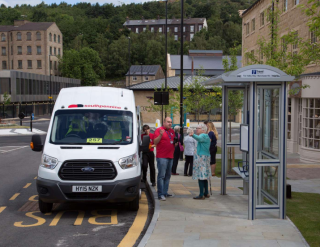
Accessible Transport: Making a Case for Community Transport
 There is no gainsaying that people deserve transport options that enable them to connect with their community, even if they have mobility-restricting disabilities or any other factor that may result in additional transport needs.
There is no gainsaying that people deserve transport options that enable them to connect with their community, even if they have mobility-restricting disabilities or any other factor that may result in additional transport needs.
This was the CTA’s position in our response to a Transport Select Committee inquiry into the current level of accessibility of the transport network. This inquiry was an opportunity to express the importance of Community Transport in the accessible transport conversation. Within this response, CTA looked to demonstrate the role of CT in providing accessible transportation as well as the current barriers that restrict the sector from doing more. Read our response here.
At the CTA, we know how essential the Community Transport sector is in providing accessible transport for those that, for whatever reason, are not catered to by mainstream public transport services. Whilst there have been improvements to the accessibility of the UK’s transport network, the focus of this improvement has been the accessibility of vehicles through the implementation of wheelchair ramps and priority space. Less emphasis has been paid to the accessibility of the transport network itself by bringing transport to people.
The focus of the Community Transport sector has always been to support people and address the unmet transport needs that exist for so many. Across the UK, there are hundreds of thousands of people for whom leaving their homes unsupported is challenging. For these people, the flexible, accessible door-to-door or door-through-door services that Community Transport providers deliver are crucial to connecting socially and reducing isolation. It is just one of the multiplicity of ways that CT is vital. The people-centred approach of Community Transport should be a case study for mainstream transport networks when considering how to improve accessibility.
For the UK’s transport network to be perceived as genuinely accessible for all, it must integrate community-owned and led solutions. Community Transport operators have comprehensive knowledge of the accessible transport needs within their communities and are, in many instances, best placed to meet them. The knowledge and the value of Community Transport operators needs to be taken into account in key strategies and decisions. Undoubtedly, CT can bring unique insights and exciting possibilities as a sector positioned to represent and provide for the types of people accessibility improvement aims to benefit.
In addition to including CT in the broader transport system, the government needs to prioritise financial investment, solid infrastructure, a well-equipped workforce, and much-needed legislative change.
In response to the transport committee, we highlighted several crucial areas where the Community Transport sector requires support. Specifically, we urge for stable, long-term funding to provide security and encourage growth. We also advocate for improvements to D1 licensing and the Approved Mileage Allowance Payment (AMAP) to facilitate recruitment. Additionally, we call for the removal of legislative complexities that hold the sector back, such as those related to small vehicle permits and blue badges.
Through inclusion, proper funding, and legislative changes, the government and other transport bodies can empower community-owned and led CT solutions to UK-wide accessibility problems.
Please download our consultation response here to read our written evidence in full.
